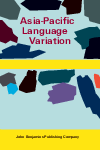Heritage language speakers have frequently been reported to have language skills weaker than homeland (monolingual) speakers. For example, Wei and Lee (2001, p. 359), a study of British-born Chinese-English bilingual children’s morphosyntactic patterns (including classifier use), report “evidence of delayed and stagnated L1 development.” However, many studies compare heritage speaker performance to a prescriptive standard rather than to spontaneous speech from homeland speakers. We compare spontaneous speech data from two generations of Heritage Cantonese speakers in Toronto, Canada, and from Homeland Cantonese speakers in Hong Kong. Both groups are similar in a strong preference for general and mass classifiers, and classifier choice being primarily governed by the noun’s number. We observe specialization of go3個 to singular nouns, a grammaticalization process increasing with each generation. The similarity between homeland and heritage patterns replicates previous studies utilizing the same corpus.
Publication Type
- Article



